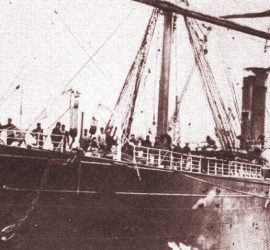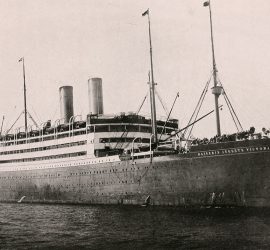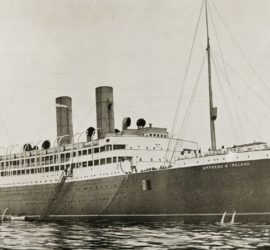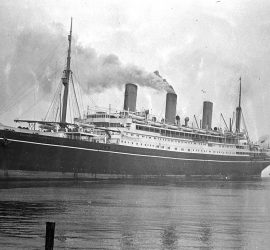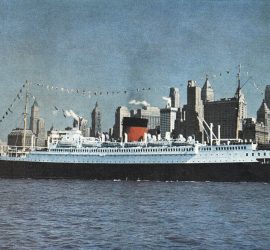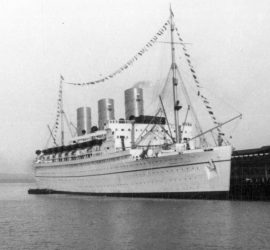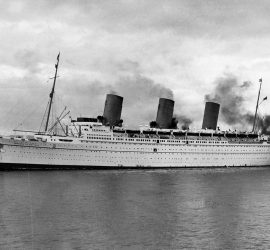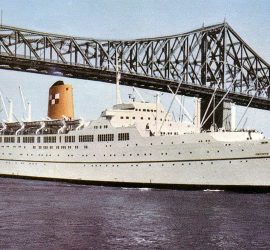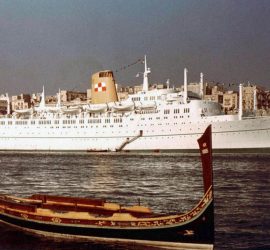1870 – 1956 / Also known as Victoria / With a remarkable longevity, the Cunarder Parthia would see almost nine decades of service in various guises.
canadian pacific line
1906 – 1931 / Also known as Empress of Scotland (I) / Entering service as the largest ship in the world, the Kaiserin Auguste Victoria focused on size and comfort rather than speed. Sailing in HAPAG livery for eight years, the ship was transferred to Canadian-Pacific after World War I but was done in by fire in late 1930.
1906 – 1914 / Although not as famous as her larger contemporaries, the Empress of Ireland made tragic history when she collided and sank in the St. Lawrence River, with the loss of over 1,000 lives.
1922 – 1952 / Also known as Admiral von Tirpitz, Tirpitz, and Empress of China (II) / Built and intended as a ship of the Hamburg-Amerika Line, this ship was yet another that was handed over to Britain following World War I. Joining the Canadian-Pacific Line, she then had a long career both as a civilian vessel and a troop transport.
1924 – 1962 / Also known as Empress of Australia (II) and Venezuela / Built as a smaller, less glamorous ship of the French Line, De Grasse was captured by Germany during WWII. Returned to her original owners after the war, she was later sold to Canadian-Pacific Line. Her final years was spent as an Italian ship on the South American run.
1930 – 1966 / Also known as Empress of Scotland (II) and Hanseatic (I) / Built during the interwar years, the second Empress of Japan was the fastest and largest Pacific liner of her time. She served in both peace and war, and was then given an extensive refit and saw a second career as the Hanseatic.
1931 – 1940 / Launched as the Canadian-Pacific Line’s largest ship to date, the second Empress of Britain quickly became a popular ship for both crossings and cruises. Sadly, her career was cut short by World War II, when she was torpedoed and sunk while employed as an allied troop transport.
1957 – 1975 / Also known as Ocean Monarch / Another post-war ship that was built when the economy had recuperated, the Empress of England helped modernise the Canadian-Pacific fleet. Later in life, she was sold and refitted as a dedicated cruise ship, but lasted only a few more years before she was sold for demolition.
1961 – 2003 / Also known as Mardi Gras, Star of Texas, Lucky Star, and Apollon / Part of the revitalisation of the Canadian-Pacific fleet, the third Empress of Canada is arguably best remembered for becoming the first ship of the Carnival cruise fleet as the Mardi Gras.

